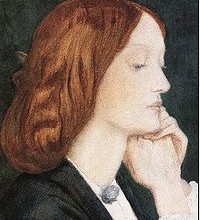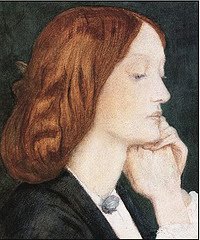

What I really wanted for Christmas
And have been wanting for years, is something like an atlas of physiognomy. I want to be able to judge, definitively, whether the character I have in my mind’s eye really has hooded eyes, or not. What, exactly, is a Roman nose or a Grecian brow and if I say a woman has the square lower lip of a Pre-Raphaelite model, does anybody actually know what I mean or does it just go straight over everybody’s head.
So maybe I am strange – maybe everybody else has a much clearer sense of what these terms actually mean, or maybe nobody cares, but it has always really troubled me that while I can identify a retrousse nose without the faintest difficulty, I can’t possess the same absolute certainty about the squareness of a square chin or the scale that a forehead must possess to be considered broad.
Perhaps it only matters if you’re writing historical fiction (that’s a subtle clue as to what’s absorbing my hours right now) where the convention of describing characters is more developed than it contemporary literary fiction where it seems the convention is much more to describe sexual characteristics or grotesqueries of feature. Hmmm … so has anybody ever seen or heard of that kind of reference book or should I be getting myself some kind of therapy for over-literary exactitude?


4 Comments
Jim Murdoch
31st January 2010I have no idea whether I’m the exception or the norm but descriptions never interest me beyond the very basics. I don’t include detailed descriptions in my own writing because I know although I read descriptions – I do endeavour to read every word in a book – I pretty much forget what I’ve read as soon as I’ve read it. I’m just thinking about the book I’ve just read and I couldn’t describe any of the characters except to note that two of them were exceptionally good-looking and I only remember that because it’s central to the plot. I don’t think descriptions, be they of people, places or things is a lost art but I don’t think it’s as important as people like Dickens thought it was. (My opinion there was that he was being paid by the word and padded everything anyway. Just as well he could actually write.)
I don’t imagine that the book you’re talking about will ever exist under that name but I would imagine there are books of portraits through the ages and a couple of those would probably be worthwhile additions to your library if you’re really worried. Personally I wouldn’t be. Everything evolves, even the historical novel. Just look at the liberties taken with the most recent adaptation of Sherlock Holmes. Rollicking good fun no doubt but Robert Downey Jr. is no Jeremy Brett.
Kay Sexton
2nd February 2010I wonder if I’m just being precious about my own writing – like you, I’m not troubled by descriptions in the works of other people.
Quillers
21st February 2010Kay, I know exactly what you mean. I have long since wondered exactly what an acquiline (sp?) nose is, and whether I’d recognise one if I actually saw it.
Until I find out, I don’t think I’ll ever feel comfortable giving such a nose to one of my characters.
Kay Sexton
21st February 2010Quillers – yup, that’s exactly my feeling too.